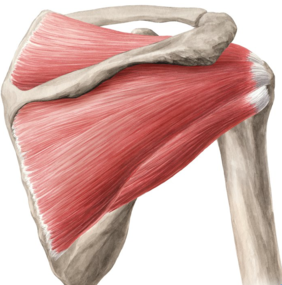The rotator cuff is a group of four muscles extending from the shoulderblade to the head of the humerus. Their function is to move the upper arm and stabilise the joint. Rotator cuff tears are among the most common locomotor injuries, and may be caused by accidents or wear and tear. Around 20 percent of people experience tears at some stage in their lives, though they are often not recognised as such, and their frequency increases with age.
Rotator cuff tears can impair shoulder function, everyday activities, and quality of life. They may force patients to take long periods off work, and result in substantial costs. These injuries can be treated surgically or conservatively (ie non-surgically), and various forms of surgery are available. Conservative treatment may involve physiotherapy, pain medications, or steroid injections. Both approaches aim to reduce symptoms and restore shoulder function.
Because rotator cuff tears are so common, and affect patients so significantly, the Swiss Medical Board has published a health technology assessment comparing the efficacy, safety, and costs of the two treatments. This is based on ten clinical studies.
While surgery provides better results in terms of shoulder function and pain reduction, there is no difference between the two methods in terms of shoulder movement and muscle strength. The committee therefore concluded that there are only moderate overall differences.
A five-years post-surgery calculation model showed that surgery was around 7,000 Swiss francs more expensive than conservative treatment, giving an estimated additional nationwide cost of around 90 million francs a year. The committee believes that a conservative treatment strategy is more desirable on cost grounds.
However, it should be borne in mind that patients with rotator cuff tears are often very different, and some groups probably benefit more from surgical treatment. Since both methods are acceptable, and are available to all patients in Switzerland, and the scientific findings were of limited significance, the committee recommended surgical treatment of these injuries.
Before doing so, a number of criteria need to be met. For example, surgery patients should be selected based on their symptoms and lifestyles, and given detailed information. A register is needed to document the long-term course of the different treatment methods in a large group of patients.
